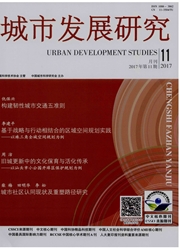

 中文摘要:
中文摘要:
新中国成立以来,首都北京在“由消费性城市向工业性城市转变”的城市发展战略指导下,现代工业迅猛发展。在计划经济时期曾以单位大院形式建设起来的大型工业企业单位,目前由于首都城市职能的调整、市场化改革所推动的土地功能置换以及环境治理等原因正面临着搬迁、消亡的危机。建筑学与城市规划学领域的学者已经呼吁亟需对城市工业遗产进行“抢救式”的保护。然而,已有规划案例往往更强调对工业遗产单体建筑或区域物质空间的保护和再利用,而对其文化内涵的认识与挖掘比较欠缺。论文从单位大院的物质空间性特征、单位制度的内涵以及单位居民的单位情结等方面,以北京京棉二厂为案例,对北京现代工业遗产的文化内涵进行解读。
 英文摘要:
英文摘要:
Since the foundation of the People's Republic of China in 1949, Beijing, as the capital city, had been experiencing rapid development of modern industry under the strategy of transiting from the consume city to the product city. In this trend, numbers of Danwei compounds were built as a basic social and spatial unit in the city to implement its industrialization strategy, which compose the major modern industrial heritages of Beijing. However, these old Danwei compounds have been facing the challenge of moving outward or even go bankrupt during the process of market-oriented transition since 1978, driven by the transformation of urban economic structure, the functional replacement of urban land in the process of urban redevelopment as well as urban environment governance et al. Scholars from the Architecture and Urban Planning have been calling for protecting the precarious industrial heritages with a sense of urgency. However, the existing redevelopment eases paid much attention to the protection and reuse of the single industrial building while ignored to understand and explore the cultural connotation underlying the industrial heritages. Aiming at contribute to these intelligent gap, this paper argued to understand and interpret the cultural connotation of Beijing's modern industrial heritages from the perspective of Danwei. Taken Beijing No. 2 Textile factory as a ease study, the physical (or spatial) characteristic, the institutional arrangement as well as social tie of Danwei compound were interpreted. Finally, we put forward that the Danwei compound including both factory and the residential area should be protected as a whole historical district.
 同期刊论文项目
同期刊论文项目
 同项目期刊论文
同项目期刊论文
 Chun Zhang, Yanwei Chai. Un-gated and Opened-up Work Unit Communities in Post-socialist Urban China:
Chun Zhang, Yanwei Chai. Un-gated and Opened-up Work Unit Communities in Post-socialist Urban China: 期刊信息
期刊信息
